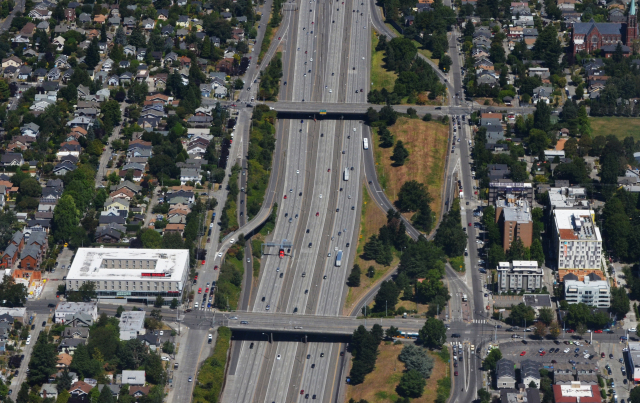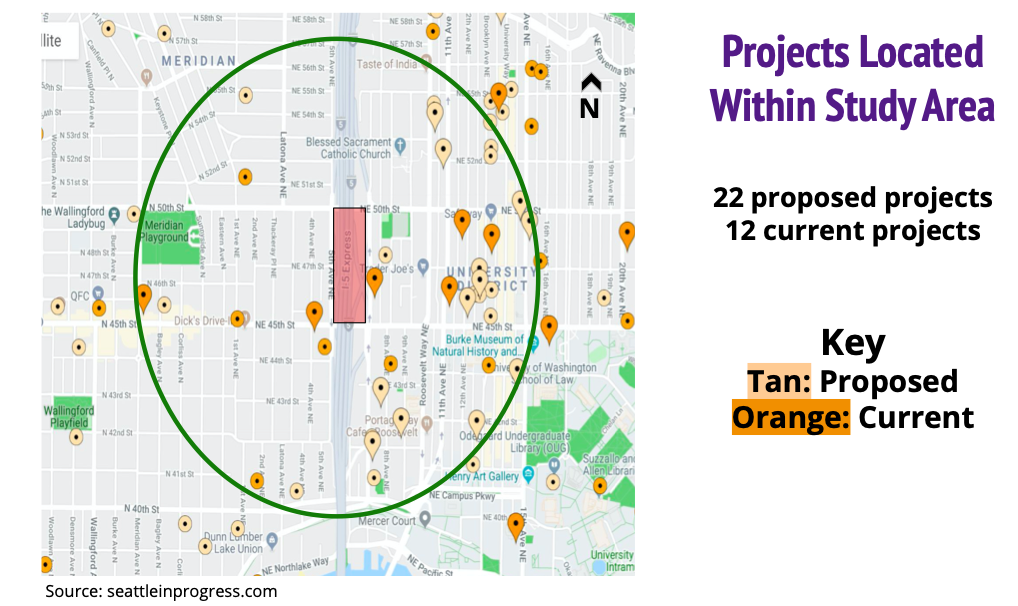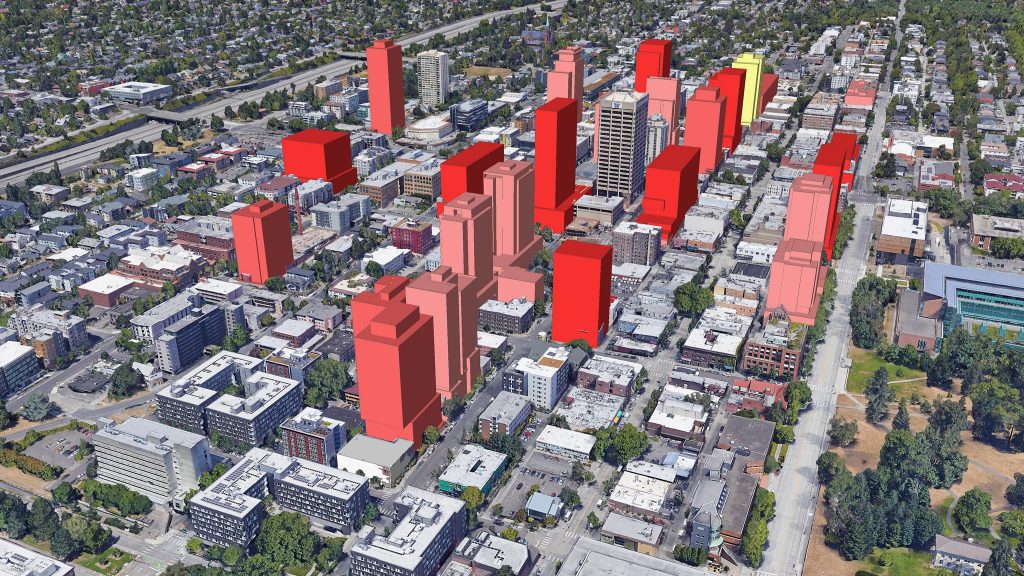
Complete the survey by May 17th and share your feedback on a I-5 freeway lid proposed between Wallingford and the University District.
It may seem unimaginable now, but just over 63 years ago, the Washington State Department of Transportation (WSDOT) established a special office to acquire the land that would one day become I-5. Cutting straight through 20.5 miles in the center of the city, about 4,500 parcels were cleared of homes, businesses, parks, and community institutions to make way for impending freeway. Seattle would never be the same.
Generations of Americans have now lived with the consequences of the United States’ mid-20th century hunger for freeway expansion. It can be difficult to envision what our cities would be like without the physical barriers, noise, air pollution, and dispersed patterns of development that freeways have inflicted on urban landscapes.
Take for example, the case of I-5 just north of Lake Union. As you stand on the NE 50th Street bridge that spans the interstate, it takes a big leap of imagination to envision gazing out at a unified city, one in which the neighborhoods of Wallingford and the U-District meet seamlessly, rather than staring down at a concrete canyon.

This exercise in imagination is exactly what a group of University of Washington (UW) students have engaged in this spring quarter as part of an urban planning practicum course, the second to analyze the prospect of lidding I-5 between NE 45th and NE 50th Streets.
How did this potential freeway lid site (not to be confused with the Downtown Seattle Lid Study Area, currently undergoing a Technical Feasibility Study) come to the UW students’ attention? In addition to its proximity to the university, this site offers up some specific features that make it a strong prospective candidate future lidding including level terrain (a rarity in topographically diverse Seattle). The freeway would also expand on the pedestrian and bike connection across I-5 to the future U-District Link Light Rail Station, which advocates have demanded for years, citing unsafe road conditions.

The advocacy group Lid I-5 also hosted a U-District freeway lid community design charrette back in 2017.
Building on the existing research
Last fall quarter, a different group UW students created a presentation on the U-District Freeway Lid which examined different factors to take into consideration when planning the future lid, including zoning and land use patterns, transportation infrastructure, demographics and trends, and current and proposed development within the study area.

The U District continues to be a very popular spot for housing development, and the lid could create additional space for homes and park space. With many more residents coming to the area, safe walking and biking connections will become even more crucial–as will bus lanes.

The current student group is continuing the effort by building on the existing research by investigating case studies, conducting a real estate study, and soliciting community feedback. You can contribute to their work by completing their survey, which will be open until May 17th.
Natalie Bicknell is a member of the Lid I-5 Steering Committee.
Natalie Bicknell Argerious (she/her) is a reporter and podcast host at The Urbanist. She previously served as managing editor. A passionate urban explorer since childhood, she loves learning how to make cities more inclusive, vibrant, and environmentally resilient. You can often find her wandering around Seattle's Central District and Capitol Hill with her dogs and cat. Email her at natalie [at] theurbanist [dot] org.

